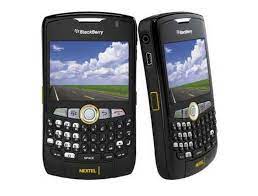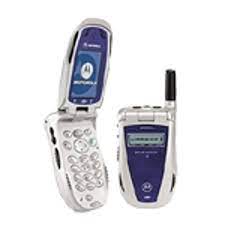Mobile Network Technologies: iDEN, CDMA, and LTE
Before we delve into the question of “What happened to Nextel?” let’s immerse ourselves in the realm of telephone communication technologies. In our ever-evolving reality, understanding the fundamental technologies that underpin our mobile devices plays a pivotal role. This review constitutes an in-depth exploration of three crucial mobile network technologies: iDEN, CDMA, and LTE.
 Each of these systems has had a significant impact on the ways we connect and exchange information. Let’s explore the principles and differences between these three calling systems:
Each of these systems has had a significant impact on the ways we connect and exchange information. Let’s explore the principles and differences between these three calling systems:
- iDEN (Integrated Digital Enhanced Network). Principle: iDEN was Nextel’s proprietary network technology based on time-division multiple access (TDMA) and frequency-division multiple access (FDMA) principles. It allowed for instantaneous push-to-talk (PTT) communication, similar to walkie-talkies. iDEN phones had dedicated frequencies for PTT, ensuring fast and direct communication between users.
- CDMA (Code Division Multiple Access). Principle: CDMA, used by Sprint, is based on spread-spectrum technology. Unlike iDEN, it employs a digital spread-spectrum modulation technique, where multiple users share the same frequency band simultaneously. CDMA assigns a unique code to each user’s signal, allowing them to transmit simultaneously without interference. CDMA does not inherently support instant PTT communication, and efforts to replicate PTT functionality on this network were not as seamless as on iDEN.
- LTE (Long-Term Evolution). Principle: LTE is based on orthogonal frequency-division multiple access (OFDMA) and multiple-input, multiple-output (MIMO) technologies. It is a 4G wireless communication standard designed for high-speed data transmission. Unlike iDEN and CDMA, LTE was primarily developed for data-centric applications, offering faster internet access and multimedia services. It uses a packet-switched network architecture optimized for data transmission, making it less suitable for instant PTT communication.
In summary, iDEN was tailored for instantaneous PTT communication, providing quick and direct connections. CDMA, used by Sprint after the merger, was more data-oriented and less suitable for PTT, leading to the loss of this feature for some former Nextel users. LTE, on the other hand, represented a leap forward in terms of data speed and capacity but was not optimized for the traditional PTT functionality of older network technologies like iDEN. The differences in their underlying principles determined their suitability for various types of mobile communication.
iDEN, CDMA, and LTE: Differences from Voice Assistants like Siri
Let’s compare these calling systems to voice-activated digital assistants like Siri:
- iDEN (Integrated Digital Enhanced Network):
- Interaction: iDEN does not have voice-activated digital assistants like Siri. It primarily relies on push-to-talk (PTT) for communication, where users press a button to transmit their voice instantly to others.
- Communication Style: iDEN is designed for direct and immediate voice communication between users, similar to walkie-talkies. It doesn’t involve natural language processing or understanding.
- CDMA (Code Division Multiple Access):
- Interaction: CDMA networks, including those using Sprint’s technology, also do not incorporate voice-activated digital assistants like Siri. CDMA is primarily focused on voice and data communication but does not offer AI-driven voice interaction.
- LTE (Long-Term Evolution):
- Interaction: LTE networks, being data-centric, can support voice-activated digital assistants like Siri. Siri is a feature of smartphones and devices connected to LTE networks. Users can activate Siri by voice commands and engage in natural language conversations for tasks like setting reminders, sending messages, or retrieving information.
In summary, iDEN and CDMA networks, including Nextel and Sprint, do not have built-in voice-activated digital assistants like Siri. These networks prioritize traditional voice communication methods, such as push-to-talk. Siri, on the other hand, is a digital assistant available on devices connected to LTE networks, enabling users to interact with their devices using natural language voice commands and receiving spoken responses. The key difference is that Siri and similar assistants are AI-driven and designed for a wide range of voice-activated tasks, while iDEN and CDMA focus on more conventional voice communication.
The Rise and Fall of Push-to-Talk (PTT) Technology
Nextel was a prominent telecommunications company in the United States, providing services well beyond a single state. It operated on a national scale, offering innovative communication solutions to customers across the country. Now, let’s delve into the story of Nextel and its journey where the decline of push-to-talk (PTT) technology are intricately tied to the evolution of mobile communication methods.
Once upon a time, PTT was a cool feature on mobile phones. It let you have quick conversations, almost like using walkie-talkies. Even if your phone didn’t have it, you could pretend by using the speakerphone. Nextel was famous for its PTT service, thanks to its unique iDEN technology. This set them apart from other carriers like Sprint and Verizon, which used different systems.
One of the significant part of Nextel’s offerings was the “chirp” phones, which used iDEN technology. These phones were popular among Nextel users due to their instant communication capabilities, allowing them to function much like walkie-talkies for quick and direct conversations. These phones became iconic and easily recognizable among Nextel users.

Regarding the collaboration with Motorola, it played a crucial role in the development of iDEN technology. Motorola was one of the primary manufacturers of equipment and phones that operated on the iDEN network. This partnership allowed Nextel to provide cutting-edge technology to its customers and ensure the reliability of its network.
Then, Sprint came along and bought Nextel. They tried to make PTT work on their network, but it was tough. They had to force it onto a network that wasn’t built for it. So, PTT on Sprint’s network ended up slower and clunkier than what Nextel offered. After Nextel was acquired by Sprint and transitioned to other networks, the chirp phones and iDEN technology lost their popularity and relevance.
Meanwhile, the world of mobile tech was changing fast. New technologies like GSM, CDMA, and LTE became the norm. They allowed for better ways to communicate, like using voice commands with Siri or Google. People found these methods more convenient, and PTT started to fade away. In a nutshell, the decline of PTT, especially at Nextel, happened because it was tricky to fit their unique tech into Sprint’s network. Also, better communication options like voice-activated assistants came into play, making traditional PTT less popular.
So, that’s the story of how Nextel and PTT lost their spark.
